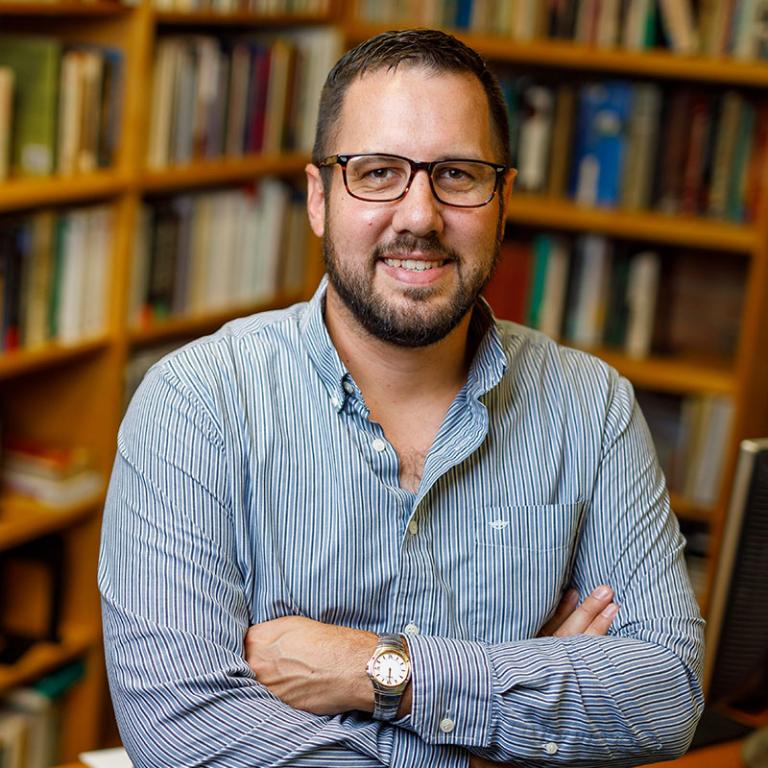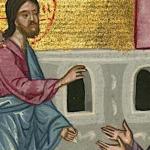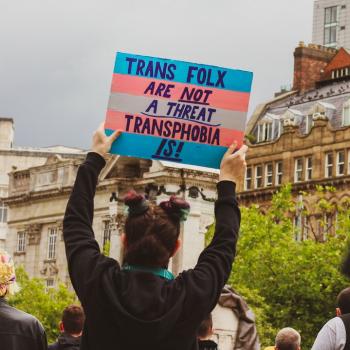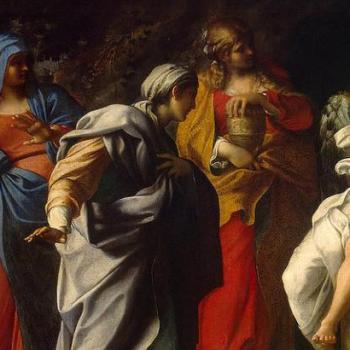Mother Mary: Undaunted Faith
By David C. Cramer
Read Luke 1:26–56
Growing up as an evangelical in the South Bend area was an interesting experiment in compartmentalization. On the one hand, as evangelicals, we were deeply suspicious of Catholicism. We thought Catholics were works based, superstitious, ritualistic, and hypocritical. On the other hand, as South Benders, we loved Notre Dame football. We loved their work ethic, superstitions, and rituals! So I guess you could say that we were the hypocritical ones. Except that we didn’t know any better.
I knew Notre Dame was Catholic, but it didn’t really occur to me that “touchdown Jesus” and the Golden Dome were anything more than interesting landmarks surrounding Notre Dame stadium. In fact, I didn’t realize until I was much older that Notre Dame is just the Hoosier way of saying Notre Dame, which is just the French way of saying Our Lady, which is just the Catholic way of referring to Mother Mary.
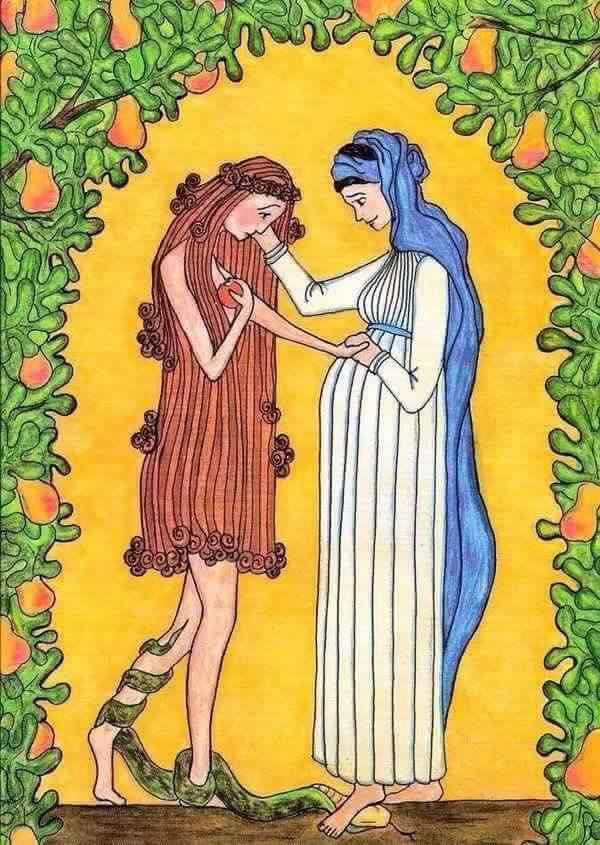
Indeed, at the peak of the Golden Dome is a 19-foot-tall, 4,000-pound statue of “Mary our Lady.” And so our church is, at times, quite literally in the shadow of Mother Mary. If you look due east down Bryan Street from the front entrance of the church, you can see Mother Mary on top of the Golden Dome, towering over Brown School. Or if you look just across the river from Camp Cramer, you can see the steeple of the Church of Our Lady of Loretto, which refers to who else but Mother Mary!
For all the reasons we evangelicals were suspicious of Catholics, I would wager that the biggest one is their devotion to Mary. And, although we never would have said this, I think the reason was because this combined our anti-Catholic bias with our anti-woman bias.
We worship Father, Son, and Holy Spirit—the latter of whom we conceived as male, contrary to much of church tradition. And we found it off-putting that Catholics worship Mother Mary.
The reality is that Catholics don’t worship Mother Mary. But they do hold her in very high esteem. In the words of our sermon series, we might say that they view Mary as the raddest of all the rad women of the Bible.
And the reason they do so isn’t just that she was the vessel through which the Son of God entered the world, as significant as that is. Catholics also hold her in high esteem for her undaunted faith, which serves as a model for all Christians, regardless of gender.
And as evangelicals, or Anabaptists, or Protestants, or Mennonites, or whatever we might consider ourselves today, we would do well to learn from our Catholic siblings and their devotion to this rad woman of the faith. So, this morning, I would like us to hear directly from the Catholic Pope on Catholicism’s view of Mary, as I think there’s a lot we can learn from their Mary devotion.
In his book The Church of Mercy, Pope Francis concludes with a section on Mary, Mother of Evangelization, which includes reflections on Her Example, Her Faith, and Her Intercession.
Citing the narrative from Luke 1, Francis describes Mary as our example of listening to God’s voice, deciding to respond to God in faith, and acting on that decision “with haste.”
Francis then describes various aspects of Mary’s faith. Quoting the Second Vatican Council, who themselves quote church father Irenaeus, Francis describes how Mary’s act of faith “unties the knot of sin.”
In the words of Ireneaus, “the knot of Eve’s disobedience was untied by the obedience of Mary; what the Virgin Eve bound by her unbelief, the Virgin Mary loosened by her faith.”
In our first sermon of this series, we saw how Eve herself began to untie this knot when, through faith, she became “the mother of all the living.” In Genesis 3, God prophesies to the serpent that his power will ultimately be destroyed by the offspring of the woman, who will strike the serpent’s head. We call this the proto-gospel, the Bible’s first hint of the gospel message.
Through her act of faith, Eve becomes the mother of all the living. And her offspring, Mary, through her act of faith, likewise becomes the Mother of all the Living, as her Offspring crushes the head of the serpent of Death, bringing Life to all.
As Francis writes, “This was the point on which the Fathers of the Church greatly insisted: Mary first conceived Jesus in faith and then in the flesh, when she said yes to the message God gave her through the angel.”
“What does this mean?” Francis continues. “It means that God did not want to become human by bypassing our freedom; [God] wanted to pass through Mary’s free assent, through her ‘yes.’ [God] asked her, ‘Are you prepared to do this?’ And she replied, ‘Yes.’” In so doing, Mary becomes the Mother of all and the model of faith.
Francis writes,
Do we think that Jesus’ incarnation is simply a past event that has nothing to do with us personally? Believing in Jesus means giving him our flesh with the humility and courage of Mary, so that he can continue to dwell in our midst. It means giving him our hands, to caress the little ones and the poor; our feet, to go forth and meet our brothers and sisters; our arms, to hold up the weak and to work in the Lord’s vineyard; our minds, to think and act in light of the Gospel; and especially to offer our hearts to love and to make choices in accordance with God’s will. And this happens thanks to the working of the Holy Spirit. And in this way we become instruments in God’s hands, so that Jesus can act in the world through us.
Finally, Francis describes Mary’s faith not as a solitary, one-time act but as a lifelong journey. “How was Mary’s faith a journey?” he asks. “In the sense that her entire life was to follow her Son: he—Jesus—is the way, he is the path! To press forward in faith, to advance in the spiritual pilgrimage that is faith, is nothing other than to follow Jesus: to listen to him and be guided by his words; to see how he acts and to follow in his footsteps; to have his same sentiments.”
“And what are these sentiments of Jesus?” he asks. “Humility, mercy, closeness to others, but also a firm rejection of hypocrisy, duplicity, and idolatry. The way of Jesus is the way of a love that is faithful to the end, even to sacrificing one’s life; it is the way of the cross.”
Francis observes that
Mary understood this from the beginning, when Herod sought to kill the newborn Jesus. But this experience of the cross became deeper when Jesus was rejected. Mary was always with Jesus; she followed Jesus in the midst of the crowds, and she heard all the gossip and nastiness of those who opposed the Lord. And she carried this cross! Mary’s faith encountered misunderstanding and contempt—when Jesus’s ‘hour’ came, the hour of his Passion, when Mary’s faith was a little flame burning in the night, a little light flickering in the darkness. Through the night of Holy Saturday, Mary kept watch. Her flame, small but bright, remained burning until the dawn of the resurrection. And when she received word that the tomb was empty, her heart was filled with the joy of faith: Christian faith in the death and resurrection of Jesus Christ.
Francis concludes,
Faith always brings us to joy, and Mary is the Mother of joy! May she teach us to take the path of joy, to experience this joy! That was the high point—this joy, this meeting of Jesus and Mary, and we can imagine what it was like. Their meeting was the high point of Mary’s journey of faith, and that of the whole Church. What is our faith like? Like Mary, do we keep it burning even at times of difficulty, in moments of darkness? Do I feel the joy of faith?
So Mother Mary is our example, and she is our forerunner in the faith.
Third and finally, Francis describes Mary as an intercessor, or missionary, who demonstrates in her life what true evangelization looks like in practice.
As Francis describes,
There is a Marian “style” to the Church’s work of evangelization. Whenever we look to Mary, we come to believe once again in the revolutionary nature of love and tenderness. In her we see that humility and tenderness are not virtues of the weak but of the strong, who need not treat others poorly in order to feel important themselves. Contemplating Mary, we realize that she who praised God for “bringing down the mighty from their thrones” and “sending the rich away empty” (Luke 1:52—53) is also the one who brings a homely warmth to our pursuit of justice. She is also the one who carefully keeps “all these things, pondering them in her heart” (Luke 2:19).
And so, Francis concludes,
Mary is able to recognize traces of God’s Spirit in events great and small. She constantly contemplates the mystery of God in our world, in human history, and in our daily lives. She is the woman of prayer and work in Nazareth, and she is also Our Lady of Help, who sets out from her town “with haste” (Luke 1:39) to be of service to others. This interplay of justice and tenderness, of contemplation and concern for others, is what makes the ecclesial community look to Mary as a model of evangelization. We implore her maternal intercession that the Church may become a home for many peoples, a mother for all peoples, and that the way may be opened to the birth of a new world. It is the risen Christ who tells us, with a power that fills us with confidence and unshakable hope: “Behold, I make all things new” (Rev. 21:5). With Mary we advance confidently toward the fulfillment of this promise.
To which this evangelical Protestant, Anabaptist Mennonite says, “Amen and amen.”

